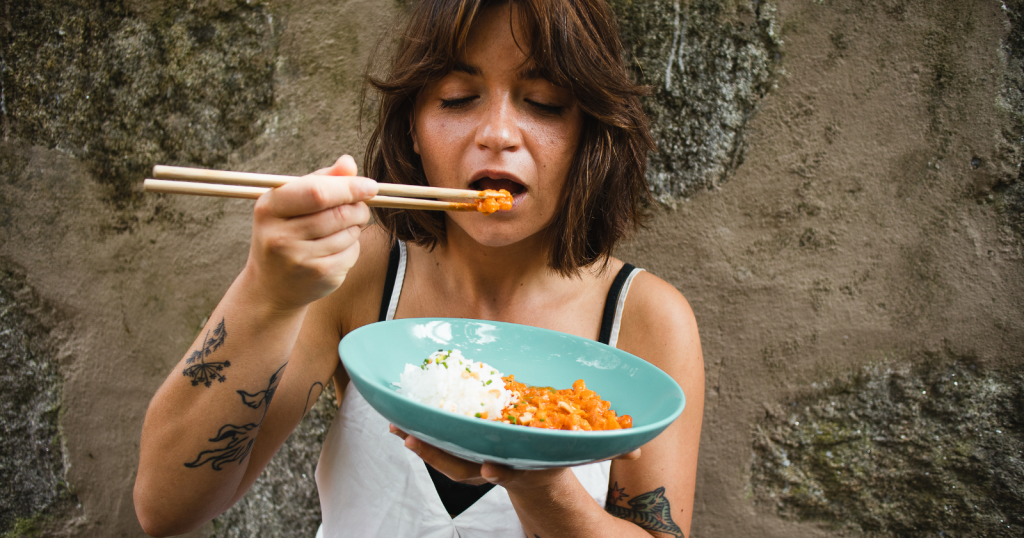12 Affordable Foods Dietitians Swear By For Better Health
Eating healthy is often associated with spending more money. Organic produce, pasture-raised meat and dairy, and plant-based alternatives typically come at a premium. And while grocery prices have risen across the board, shopping for nourishing ingredients doesn't have to lead to a higher bill than usual. It just takes a little foresight.
"Eating healthy doesn't have to break the bank—it's about strategy, not spending," Kristen Lorenz, R.D.N., says. "Planning meals around versatile, nutrient-dense ingredients saves both time and money."
Lauren Manaker, R.D.N., agrees, emphasizing the importance of planning meals and snacks ahead of time to avoid impulse purchases and costly takeout. She also highlights the benefits of buying staple items like rice, beans, oats, and frozen produce in bulk. "Choosing frozen can also help avoid food waste, which ultimately saves money," she adds.
So, what food items should you build your meals around? Lorenz and Manaker share their healthy and budget-friendly grocery staples.
You don't have to buy everything frozen to save money. "Fresh fruits and vegetables are often cheapest and most flavorful when in season," Lorenz says. She advises her clients to select the freshest and most affordable produce every week and to base their meals around those items.
Not sure what's in season? We have guides for spring and fall produce, along with recipes that showcase summer and winter fruits and veggies at their best.
If you tend to think frozen veggies aren't as good as the fresh stuff, think again. Lorenz says frozen veggies are just as nutritious, as they're flash-frozen when they're ripe, which preserves nutrients. "They're also often less expensive than their fresh counterparts, especially when it comes to out-of-season produce."
Frozen veggies aren't only a great option when a recipe calls for an ingredient that's not in season, but they're ideal for quick recipes and adding nutrients to dishes without all the chopping. Sprinkle them in stir-fries, pasta, soup, and more. I always keep frozen peas and edamame on hand for sprucing up a quick batch of fried rice made with leftover grains.
If you've had to toss one too many clamshells of moldy berries, frozen fruit offers a way to have produce on hand with less potential for spoilage. And like veggies, Lorenz says frozen fruit retains most of its nutrients.
Beyond whipping up smoothies, you can bake frozen berries into blueberry muffins and sprinkle raspberries over a bowl of oatmeal.
"My family loves to eat frozen fruit straight from the freezer as a snack on hot summer days!" Lorenz says.
One of my go-to snacks or quick breakfasts is a scoop of yogurt with frozen blueberries. It's so much cheaper than buying them fresh, and their icy texture makes the healthy treat feel like I'm eating dessert.
Oats are a versatile and nutrient-dense ingredient for breakfast foods and snacks. They're also rich in fiber, which means they'll keep you feeling full. Manaker uses this pantry staple in overnight oats, smoothies, and energy bars. We also use oats in homemade granola, blended into oat milk, and, yes, even cookies.
There are endless ways to use a can of beans: salads, soups, tacos, side dishes, and more. They're also a great plant-based protein, rich in fiber and iron. A can of beans typically costs around $1, and a 1/2-cup serving of the black beans in my cupboard contains 8 grams of protein and 9 grams of fiber.
"They are versatile in color and flexible when it comes to flavor," Lorenz says. When using canned beans, she recommends rinsing them to reduce the sodium content.
Toss black beans in a colorful salad or mash them and top tostadas or fill tacos. Blend garbanzo beans or chickpeas into a creamy hummus, cook them into a stew, or mix them into salads and protein bowls.
But what about a bag of dry beans? They're just as good for your health and wallet. Dry beans just take a bit more patience to cook.
Mushrooms are often used as a meat replacement, but they can also be used to "beef" up any ground meat recipes. Manaker blends finely chopped mushrooms into burgers, meatballs, or meat for tacos, which not only makes the meat go a bit further, but adds antioxidants, moisture, and vitamin B. "Mushrooms have a meaty texture and umami flavor that blends seamlessly with meat, so you won’t even notice the difference," she says.
"They help me stretch meat in beloved recipes while adding some fiber to dishes that are otherwise fiber-free, like meatballs."
Whether it's tuna, salmon, or sardines, it's always convenient to have canned fish in the pantry. Manaker says canned tuna or salmon is "a budget-friendly way to get omega-3s, which are great for heart and brain health."
"These small fish are rich in vitamin D and are a great way to obtain high-quality protein at a lower cost than fresh seafood," Lorenz says about canned salmon or sardines.
Canned fish is a protein-packed addition to salads or the star of any seafood patty. It's also easy to whip up with a bit of olive oil, salt, and pepper to eat with bread or crackers.
While egg prices hit record highs earlier this year, they are finally starting to decline. Plus, eggs are a great alternative to pricier protein sources, even if they're more luxe than usual. "Affordable and nutrient-dense, eggs are a great source of protein and vitamins like B12," Manaker says.
Beyond breakfast favorites like frittatas, shakshuka, or avocado toast, the versatility of eggs makes them suitable for snacks, lunch, and even dinner. Hard-boiled eggs can be eaten as snacks, sprinkled over salads, or made into egg salad. I use them to round out meat-free sandwiches, fried rice, and to top roasted sweet potatoes.
"A calorie-dense, shelf-stable protein and healthy fat source that works well in snacks, smoothies, or as a dip for fruit and veggies," Lorenz says about natural nut butters. She advises looking for jars that do not contain hydrogenated oils or added sugars.
"Buying grains in bulk cuts costs, and these staples provide fiber, B vitamins, and staying power," Lorenz says. She uses brown rice, quinoa, and whole-grain pasta for a variety of dishes and to stretch out more expensive ingredients, such as meat and cheese.
Grain bowls are an easy way to put rice and quinoa to good use. Beyond the classics, noodles are great for pasta salad and hearty soups.
"Packed with vitamin A, fiber, and antioxidants, they’re a versatile and filling option," Manaker says. "I roast them, mash them, or slice them into fries for a healthy side."
You may also like...
Diddy's Legal Troubles & Racketeering Trial

Music mogul Sean 'Diddy' Combs was acquitted of sex trafficking and racketeering charges but convicted on transportation...
Thomas Partey Faces Rape & Sexual Assault Charges

Former Arsenal midfielder Thomas Partey has been formally charged with multiple counts of rape and sexual assault by UK ...
Nigeria Universities Changes Admission Policies

JAMB has clarified its admission policies, rectifying a student's status, reiterating the necessity of its Central Admis...
Ghana's Economic Reforms & Gold Sector Initiatives

Ghana is undertaking a comprehensive economic overhaul with President John Dramani Mahama's 24-Hour Economy and Accelera...
WAFCON 2024 African Women's Football Tournament

The 2024 Women's Africa Cup of Nations opened with thrilling matches, seeing Nigeria's Super Falcons secure a dominant 3...
Emergence & Dynamics of Nigeria's ADC Coalition

A new opposition coalition, led by the African Democratic Congress (ADC), is emerging to challenge President Bola Ahmed ...
Demise of Olubadan of Ibadanland
Oba Owolabi Olakulehin, the 43rd Olubadan of Ibadanland, has died at 90, concluding a life of distinguished service in t...
Death of Nigerian Goalkeeping Legend Peter Rufai

Nigerian football mourns the death of legendary Super Eagles goalkeeper Peter Rufai, who passed away at 61. Known as 'Do...








